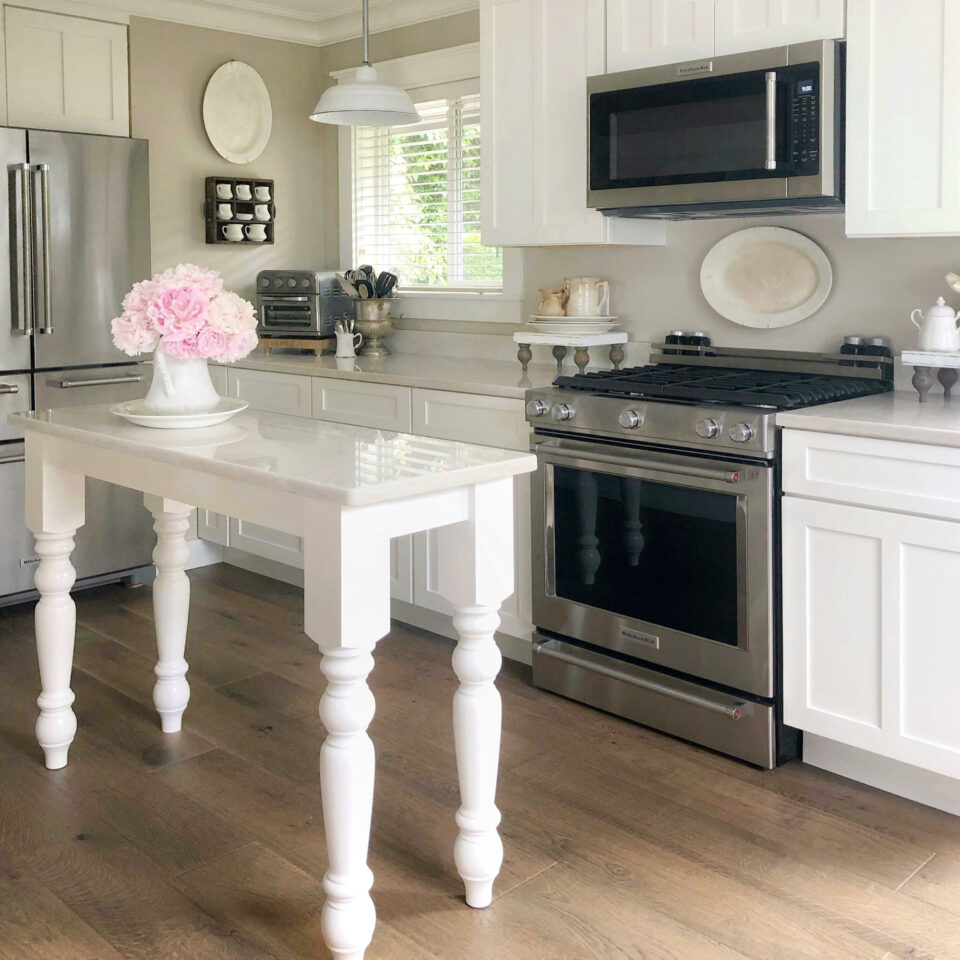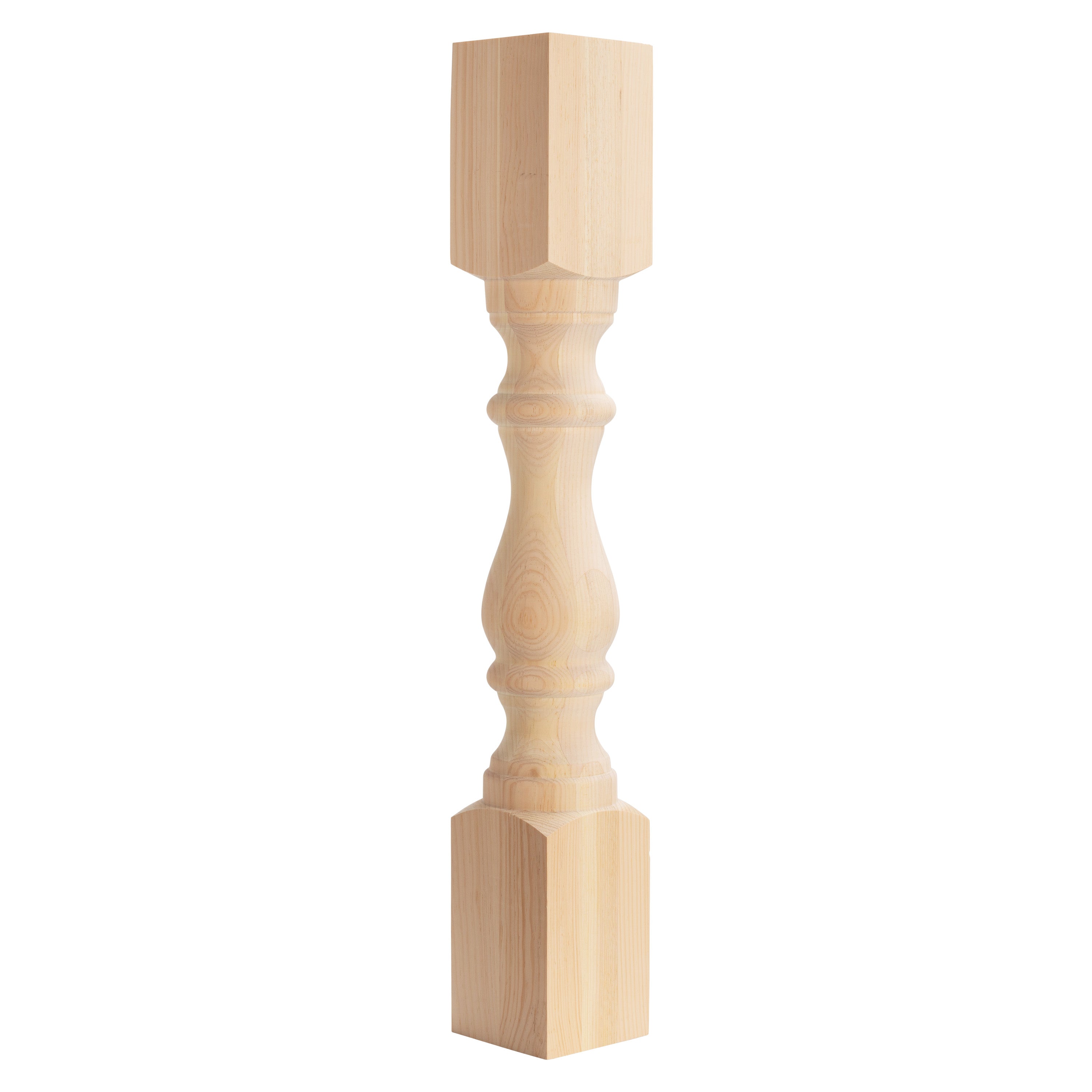Leading Considerations When Choosing a Kitchen Area Island Leg for Modern Cooking Area Interiors
In the world of contemporary kitchen insides, the selection of a cooking area island leg is essential, influencing both looks and performance. Key considerations include the option of products that balance with modern design, as well as the leg's stability and assistance to make sure enduring performance. Furthermore, elevation and proportions have to be attentively assessed to preserve a cohesive look. As these components link, they raise additionally inquiries regarding how to accomplish the best balance between design and functionality, leaving one to contemplate the effects of each decision on the total kitchen experience.
Material Options
When it comes to selecting a kitchen island leg, material options play an important duty in both looks and performance. kitchen island leg. The most usual products consist of timber, steel, and composite choices, each offering potential drawbacks and distinctive benefits
Timber is favored for its warmth and traditional charm, providing an ageless appearance that matches numerous cooking area styles. It is highly flexible, allowing for customization in terms of shades and coatings. Nonetheless, wood may need more upkeep to avoid warping or damage from wetness.
Metal, on the other hand, brings a industrial and contemporary style to cooking area islands. Stainless-steel and functioned iron are popular selections, known for their toughness and resistance to wear. They can stand up to the rigors of day-to-day use but might do not have the warmth connected with timber.
Composite products, such as crafted timber or artificial blends, provide a balance in between price, toughness, and visual appeals. These options are often created to simulate the appearance of natural materials while offering resistance to spills and scrapes.
Eventually, the option of product ought to straighten with the overall kitchen area layout and planned usage, making sure that the kitchen area island leg is both aesthetically enticing and functional.
Design And Style
The design and layout of a cooking area island leg substantially contribute to the general aesthetic of the space, enhancing the picked product. When selecting the leg design, think about the architectural style of the cooking area. For instance, streamlined, minimal legs constructed from stainless steel or acrylic harmonize with modern designs, while ornate, transformed timber legs boost conventional or farmhouse aesthetics.
Additionally, the finish of the leg can influence the aesthetic effect; a sleek chrome or matte black coating might stimulate modern style, while distressed wood talks to rustic beauty. The leg's shape additionally plays a critical role-- straight, angular kinds convey a more commercial feel, whereas conical or rounded legs present a softer, a lot more welcoming look.
Including decorative components, such as carvings or decorations, can include individuality and personality to the kitchen area island, more improving its duty as a focal point. Ultimately, the picked leg design need to not only straighten with the overall cooking area design but also show the property owner's individual taste, making sure that the cooking area island ends up being a practical and unified centerpiece within the contemporary kitchen area inside.
Height and Proportions
Achieving the right elevation and proportions for a kitchen island leg is important for both performance and looks. Cooking area islands commonly vary in height from 28 to 36 inches, relying on their planned use-- whether as a cooking surface area, eating area, or work area. Criterion kitchen counter elevation is around 36 inches, making it important that the legs you pick enhance this elevation to supply a seamless, integrated appearance.
Proportions also play a vital role in the aesthetic equilibrium of the kitchen. A slim leg may be appropriate for a modern or minimalistic island, while a more considerable leg may be required for rustic or conventional designs.
When choosing the height and percentages of the cooking area island leg, remember the overall design style of your kitchen. This attention to information not just improves the capability of the area yet additionally adds to a cohesive and aesthetically appealing interior decoration.
Stability and Support
Consistently ensuring security and support in kitchen area island legs is vital for both security and functionality. A well-constructed kitchen area island should endure daily use, including weight from home appliances, food preparations, and social gatherings. As a result, the choice of legs ought to focus on durable products and layouts that can offer ample assistance.
When examining security, think about the leg's material-- light weight aluminum, wood, or steel often use premium stamina contrasted to lighter alternatives. In addition, the style should feature a wide base to disperse weight this post equally and minimize the danger of tipping or tottering. For circumstances, legs made with an A-frame or cross-bracing can substantially boost security.

Integrating these factors to consider will not only improve the total safety and security of the kitchen space but additionally improve the longevity and capability of the cooking area island, making it a valuable centerpiece in modern kitchen interiors.
Finishing Touches
When it comes to finishing a kitchen area island, thoughtful completing touches can significantly improve both its visual allure and capability. Choosing the right leg design is crucial, yet matching it with proper information can transform the whole area. Think about adding ornamental aspects such as toe kicks or walls that match the cabinetry or floor covering to produce a seamless appearance.

A cohesive color combination and material choice will certainly raise the kitchen island, making it a fascinating focal factor. By paying focus to these finishing touches, property owners can create a kitchen island that is both useful and stunning, providing to their way of living and layout preferences.
Final Thought

In my review here the realm of contemporary cooking area insides, the selection of a kitchen island leg is essential, influencing both visual appeals and performance.The design and design of a kitchen area island leg dramatically add to the general visual of the space, enhancing the selected product.Achieving the right height and percentages for a kitchen island leg is critical for both functionality and looks.Constantly ensuring stability and assistance in kitchen area island legs is vital for both safety and functionality.In summary, selecting a kitchen area island leg for modern-day interiors calls for mindful factor to consider of material options, layout style, elevation, percentages, and stability.